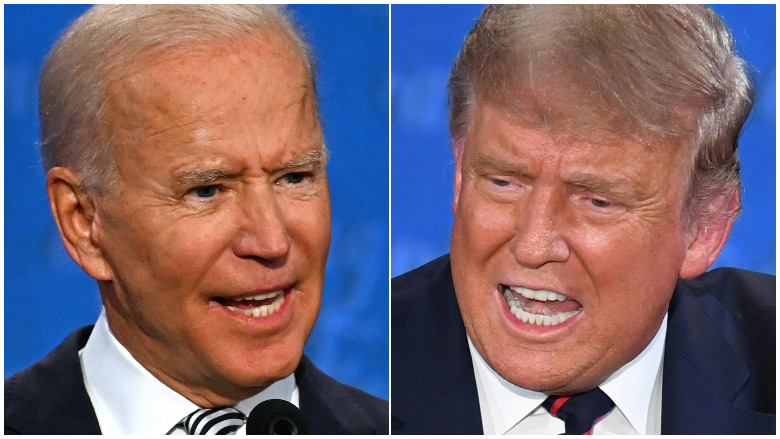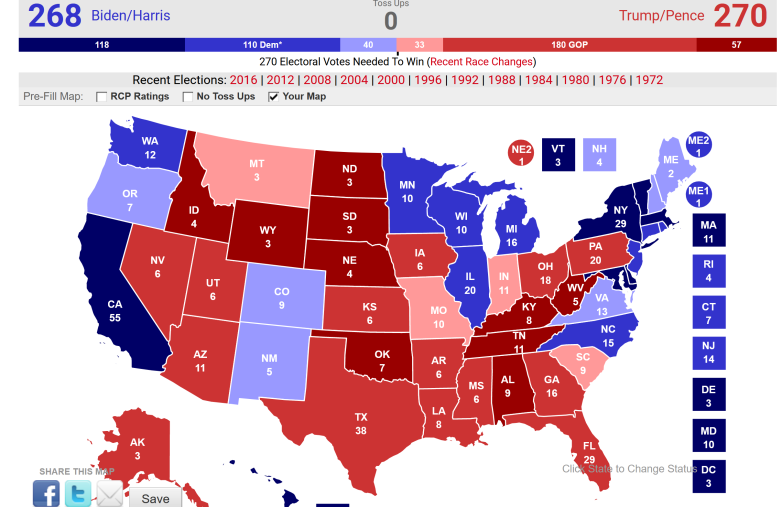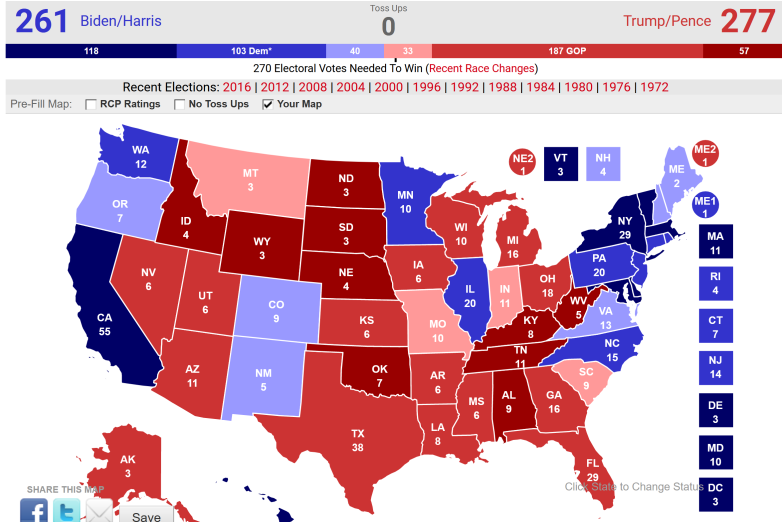
Getty Can Trump win without North Carolina?
North Carolina is shaping up to be quite the cliffhanger in the 2020 presidential election. That has a lot of people wondering: Can President Donald Trump still win the election without North Carolina?
The answer is, yes, but it’s not an easy path. In addition, if Trump were to lose a state like Ohio, the maps get even tougher for him. You can see our Electoral College maps for Ohio here. If Trump loses Ohio, he does have a few pathways to victory as well. In both cases, the election pathways get a lot smaller for the president.
That doesn’t mean Trump won’t win North Carolina. With 99% of the vote in, he was ahead — but barely.
First, check out the live North Carolina election results here, courtesy of Decision Desk HQ:
Now, let’s look at some electoral map possibilities that show how Trump can still win the White House without North Carolina.
Here’s what you need to know:
How Trump Can Win the White House Without North Carolina

GettyPresidential candidates Donald Trump and Joe Biden exit their respective vehicles while campaigning in Florida.
We used the customizable map function for the Electoral College on RealClearPolitics to make our maps. Yes, it’s true that Trump can still win the White House without North Carolina. That doesn’t mean it would be easy, so it’s clearly a state the president would like to retain.
Without North Carolina, Trump can win if he takes Pennsylvania, Nevada and one of the two Congressional Districts (Nebraska or Maine) that each give a single electoral vote to the victor.
This map assumes that Biden wins Wisconsin and Michigan as well as North Carolina, but that Trump wins Ohio.

Even if Trump wins Michigan and Nevada, he can’t win the election without North Carolina and Pennsylvania unless he also gets Wisconsin. That highlights the importance of North Carolina.

However, if you give Trump Wisconsin (or, alternatively, if he flips Minnesota), he wins in the above map even without North Carolina and Pennsylvania.

What are the president’s chances of winning some of these states? He’s been behind in most of the polls in the trifecta of Midwestern states that he won in 2016 — Wisconsin, Michigan and Pennsylvania.
However, some pollsters believe there is a hidden Trump vote of people who aren’t willing to admit they’re voting for the president but do so anyway. Wisconsin is a state that trended Democratic in the lower turnout midterm elections, with a Democratic Governor Tony Evers ousting Republican Scott Walker and a statewide Supreme Court seat going to the Democrat. Michigan has a Democratic governor whose COVID-19 restrictions have caused controversy. Trump visited both states heavily holding large rallies in the waning days of his campaign. Pennsylvania has been in reach of Trump, but Biden has ties to the state and leads in many of the polls. Unrest and looting in Philadelphia after a police shooting brought law-and-order to the forefront in that state as the election came to a close. The same is true in Wisconsin, where arsons occurred in Kenosha, the site of Trump’s final rally in that state.
The bottom line is that Trump’s route to victory lies through at least part of the Midwest if he can’t win North Carolina. He needs to win at least one of the Midwestern states he flipped in 2016 to have a chance at the White House if he doesn’t keep North Carolina (unless he picks up another surprise state somewhere, like Virginia).
READ NEXT: Electoral College Predictions That Could Give Trump the White House.